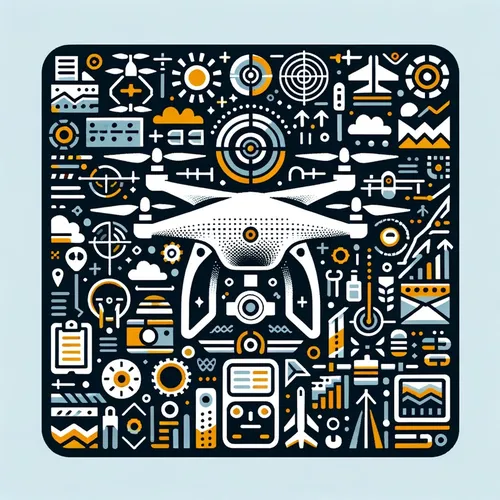Drone Pros Soar in 2025: Juicy Tech, Biz Booms, and Reg Shakeups!
- Author
- Quiet. Please
- Published
- Sat 16 Aug 2025
- Episode Link
- https://www.spreaker.com/episode/drone-pros-soar-in-2025-juicy-tech-biz-booms-and-reg-shakeups--67387707
This is you Professional Drone Pilot: Flight Tips & Industry Updates podcast.
Professional drone pilots are witnessing rapid transformation in both technology and business as the industry speeds through 2025. Cutting-edge flight techniques are now powered by smarter automation systems and longer-lasting batteries. Upgrades in battery chemistry and aerodynamic propulsion have pushed typical commercial drone endurance up by twenty to thirty percent, so aerial photographers and inspection specialists can now tackle more expansive missions on a single charge. New onboard cooling technologies and dynamic flight control mean better performance in heat, wind, and unpredictable field conditions, improving both stability and safety. For those working with mixed fleets, modular drone designs and AI-driven payload optimization make it easier to pivot between tasks like surveying, asset inspection, and mapping without swapping entire platforms. Dronefly notes that standardizing your fleet not only simplifies maintenance but can also lower your insurance premiums and reduce training costs.
Industry reports reveal a strong focus on predictive maintenance, especially as more pilots rely on advanced software and analytics tools such as Airdata, which automates log tracking, schedules maintenance, and enhances compliance with regulatory requirements. The global drone maintenance services market is expected to grow by over 5 percent annually through the next several years, driven by demand for reduced downtime and maximized fleet lifespan, as described in recent research from Archive Market Research. For insurance and liability, several leading providers have begun offering flexible, per-mission and usage-based coverage tailored to diverse commercial activities. This reduces upfront costs while ensuring compliance on high-value projects.
Regulatory updates are top-of-mind, with the Federal Aviation Administration reaffirming that all Part 107-certified pilots must complete recurrent online training every two years, regardless of specialty. Those seeking roles in complex airspace or near people must also pass advanced in-person flight reviews and ensure equipment is rated for the intended operations, according to the latest 2025 guides from regulatory agencies.
2025 also brings heightened business opportunity. Global market expansion is being driven by new sectors like construction, energy, and logistics, where drone-as-a-service firms bundle operations, analytics, and maintenance—streamlining processes for contractors. Inspection and data services, in particular, have seen robust demand as infrastructure ages and companies embrace more frequent aerial monitoring.
Action steps for listeners include updating their recurrent training now, using predictive maintenance platforms to reduce downtime, and reviewing their insurance needs in line with changing regulations and client requirements. They should also consider adjusting pricing strategies to reflect value-added services, like analytics or expedited reporting, in a still-competitive landscape. With weather extremes becoming more common, flight planning that leverages real-time data is even more critical—modern platforms now integrate local forecasts and airspace alerts for safer, more profitable missions.
Looking ahead, artificial intelligence, automation, and tighter integration with enterprise systems are poised to make professional drone operations more lucrative and efficient. Stay tuned for regulatory shifts as authorities adapt to new uses and increased airspace complexity.
Thanks for tuning in. Be sure to join us next week for more. This has been a Quiet Please production, and for more, check out Quiet Please Dot A I.
For more http://www.quietplease.ai
Get the best deals
